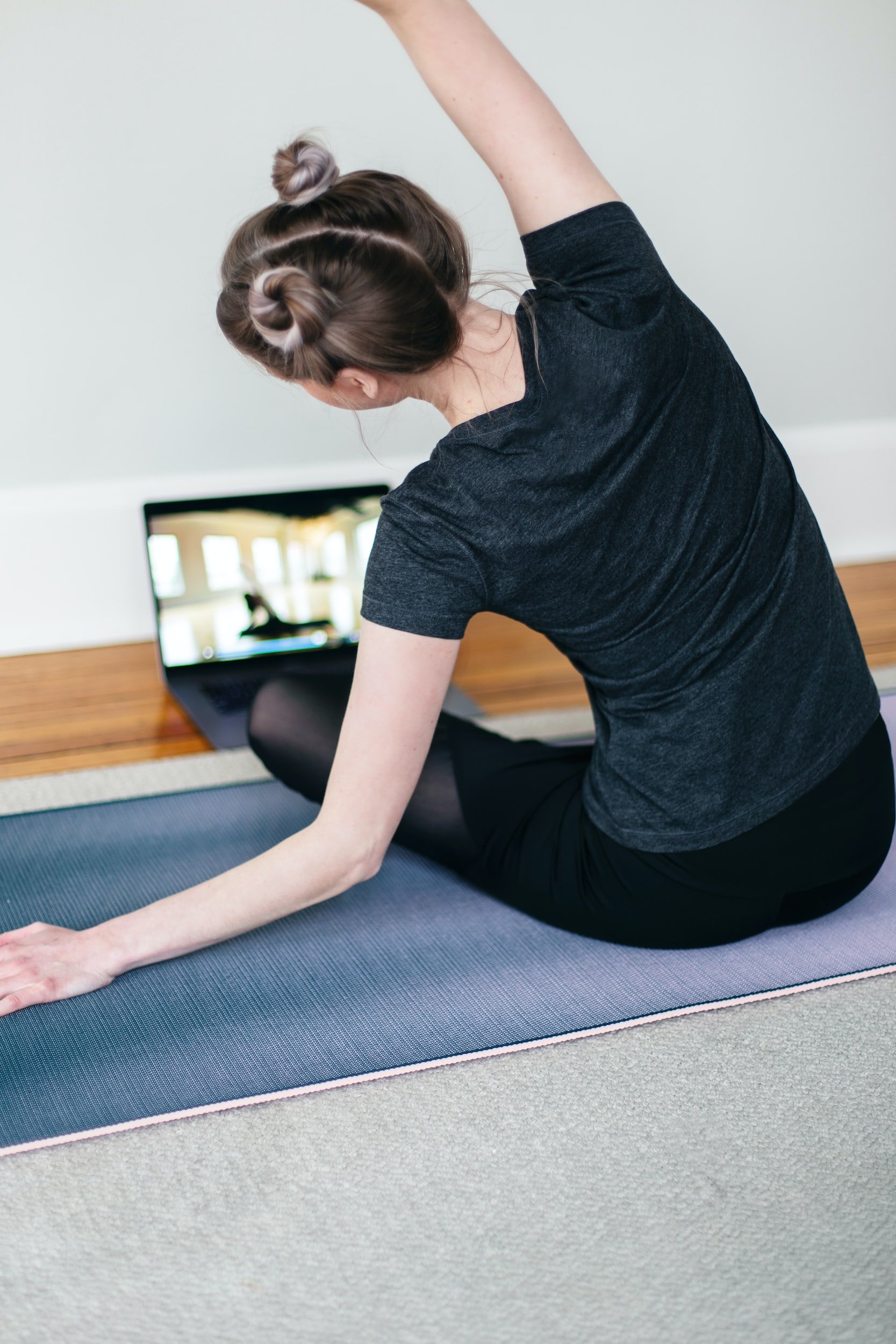“When can I exercise again after having the baby?”, OR “Do I have to wait until my 6-week postpartum appointment to get back to physical activity?” The answers to these questions are going to vary based on your individual situation and needs. In general, it is safe for most moms to begin connecting with their deep abs and pelvic floor muscles using breath. Low-intensity walking and mobility exercises may be beneficial for you as well. Let comfort and energy level be your guide. Remember movement is good, but you don’t want to interfere with healing, especially if you had tearing or a c-section. You should not return to anything more vigorous before a doctor can tell you that there are no medical contraindications. If bleeding increases following even light activity, that may indicate that you are doing too much and you should contact your physician.
If you are “cleared” for exercise at your postpartum visit, this means that your doctor from a medical perspective thinks you can begin to be more physically active. You should still approach exercise with a gradual and progressive approach. This is not a green light to jump into your old routine. Abdominal and pelvic floor tissues can take up to 9-12 months to heal.
If your doctor approves and you’re ready to exercise, the progression below might help you prioritize your first steps back to fitness.
Heal: Whether you’ve had a c-section or vaginal delivery you have tissues that need to heal. Your initial focus should be on promoting healing by getting enough water, and nutrients and resting when you can. You should not begin to exercise until you know that any tears or incisions have healed properly. You’ll also want to address any scar tissue. Part of healing may also mean addressing concerns like incontinence, the feeling of pressure or bulging in your vagina, or abdominal separation. These are all common conditions, but not normal. It may not necessarily mean that you can’t begin an exercise program simultaneously, but you should consult with a pelvic floor therapist and prioritize exercises that will help you improve those symptoms or conditions.
Core: Most muscles of your core are impacted by pregnancy and delivery. All moms should strengthen these muscles and ensure that they function optimally by working synergistically. This often means beginning with breath, transverse abdominis, and pelvic floor muscles.
Function: Being a mom is physically demanding. Part of your return to fitness should be mastering repetitive movements like hip hinges or getting up off of the floor (think deadlifts and lunges), strengthening muscles that impact posture (think back and glutes, and focusing on mobility (think upper back, ankles, hamstrings and hip flexors).
Strength: After you have foundational core strength and have mastered movement patterns, you can begin to think about gradually progressing your program. This could include adding more resistance, moving to moderate to high-impact activity, and performing more demanding abdominal exercises like rotations or exercises in positions against gravity.
Other considerations of when it’s best for you to begin to exercise include sleep (ability to recover), support from family/friends, and mental state. Hopefully, this doesn’t sound overwhelming because there are many positives to postpartum exercise like establishing a healthy lifestyle for your family, and training in a way that you can become stronger than you were before pregnancy. And remember, exercise as a mom is not a luxury, it is essential in meeting the physical and emotional demands of motherhood.
Ready for more tips? Download 5 Tips for a Stronger Core After Pregnancy.


